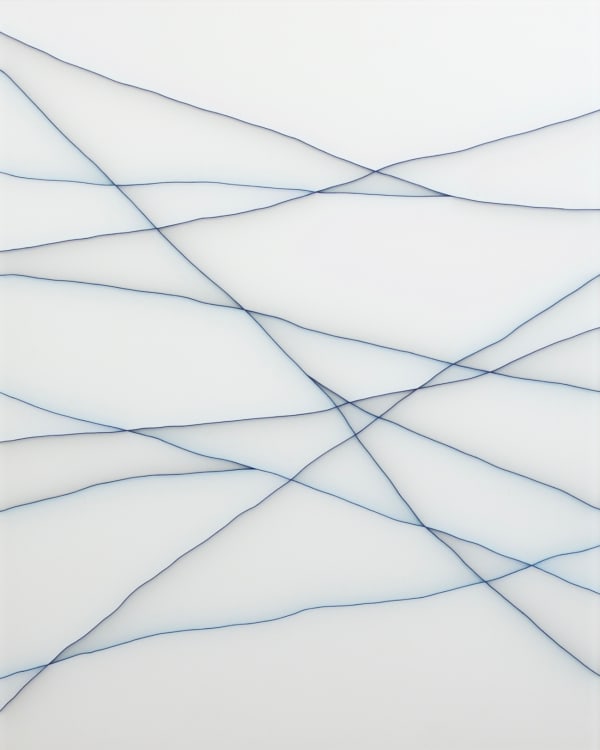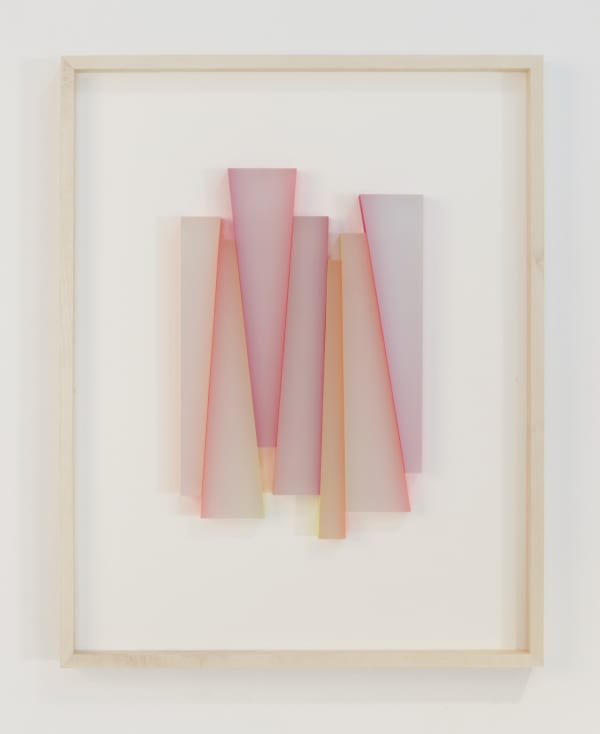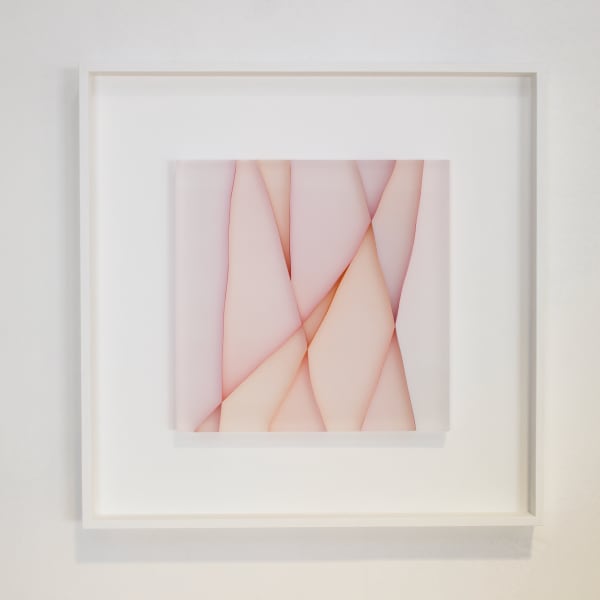-
-
The principal material common to every piece is Plexiglas. It is an extremely versatile material that possesses two qualities that inspire the work – form and light. Unlike a flat canvas, a sheet of Plexiglas is a multifaceted object that can support itself in space as well as absorb, reflect, and permeate light.
Each work consists of cut and reassembled sheets of Plexiglas. The process starts with a simple line drawing on paper, which is then transposed onto the Plexiglas. The lines are then cut to create several segments, each one with edges that can be coloured and surfaces that can be altered for effect. After painting these sections are carefully reassembled but with borders that permeate colour within the very surface of the painting. Natural light reflects off the internal painted edges to create a soft diffusion of local colour on either side, allowing each section to resonate with subtle and alternative hues.
The light within each piece is influenced through varying the surfaces and coloured edges. A dark shiny surface can give depth to flatness by reflecting the actual environment in which the work is situated, but it is an inexpressive and mechanical depth that lacks any deep emotional feeling. A matt white surface, on the other hand, absorbs the light, trapping it within the shallow picture plane, enabling colour to bleed across each separate section, which in turn, draws the viewer towards the inner world of the artwork itself. This creates a tension in the very fabric of the work between the outward, reflecting sections and the softer ambient areas of elusive colour.
The shifting perception in an encounter with the works is crucial to the central idea that these perfectly flat ‘paintings’ are in fact thin sculptures. Movement in every axis reveals a range of colours, edges and surfaces that draw our attention to the painting as an object and its relationship to the room in which it is situated. Indeed, the paintings demand resolution not only in perceptual terms but also in the physical space of the viewer who must move about the work to make sense of it.
In the absence of elaborate pictorial arrangements, the paintings appeal to a heightened awareness of chromatic shift. The lines, which are cut through the panel early in the process, provide formal composition but also establish the physical attributes of the work. When painted and reassembled each section is susceptible to the colours that radiate from the adjacent lines. It is this interaction and diffusion of colour that gives each work’s simple compilation of sections its surprising complexity and richness. Through a process of deconstruction and reconstruction, the key qualities of form and light succeed in creating paintings which focus our attentions on some of the mysteries of the world around them, while maintaining their own remove and self sufficiency from it.
-
ACOUSTIC LIGHT *1
Automotive Paint on Cast Acrylic
125 x 100cm

















